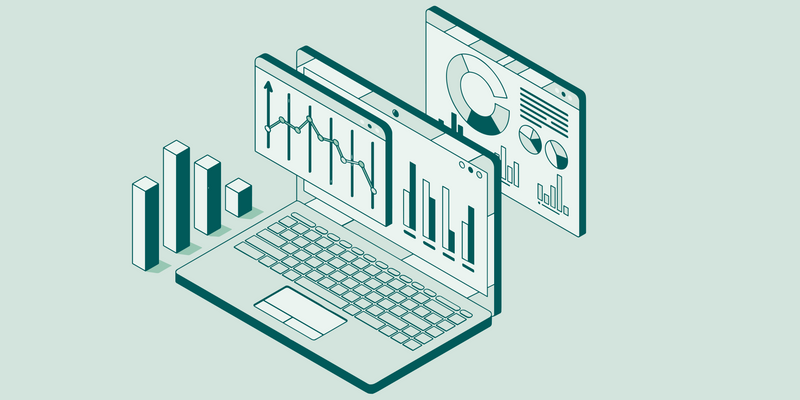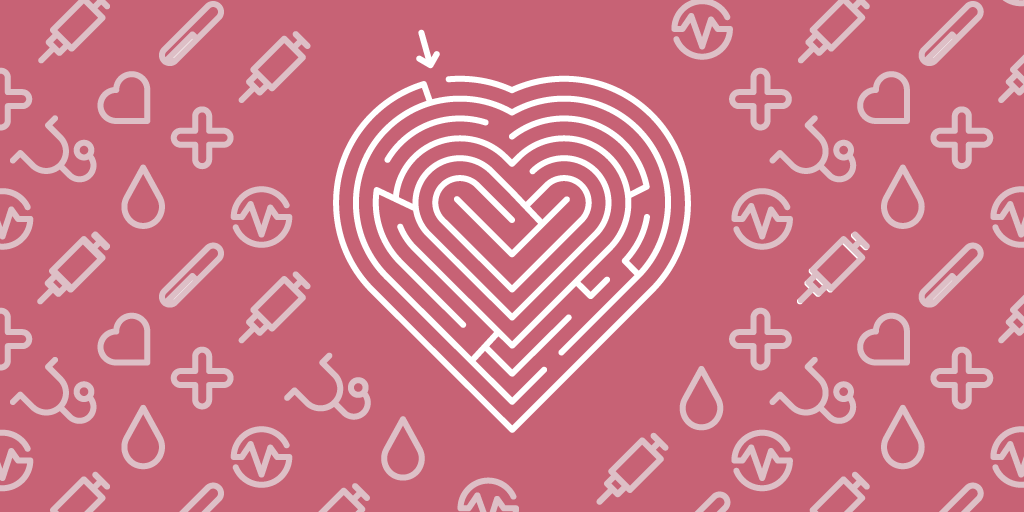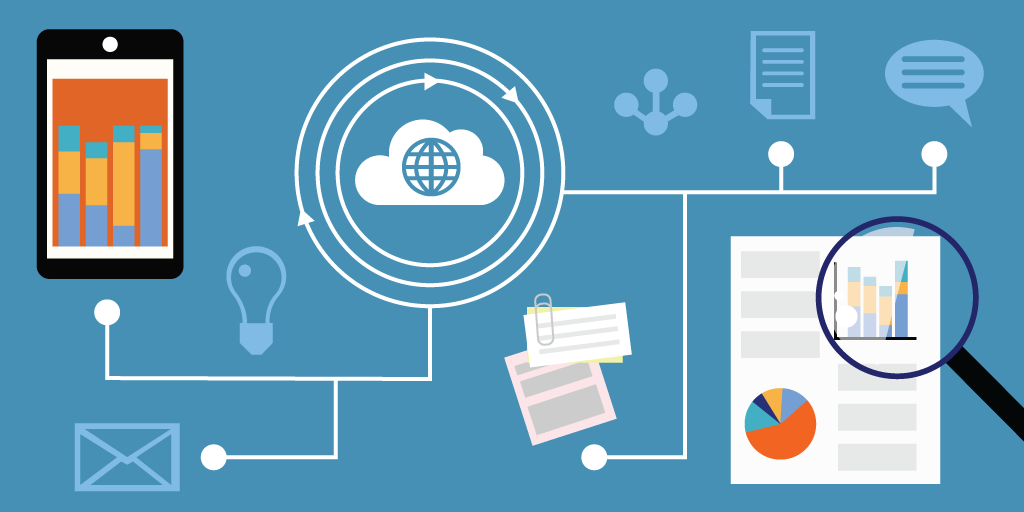Customer Satisfaction Score (CSAT) is a key metric that reflects how citizens feel about the services they receive, and in the public sector, those feelings matter more than ever.
When local governments focus on CSAT, they’re not just improving service quality; they’re strengthening public trust, boosting civic participation, and making communities function more smoothly.
In recent years, e‑government satisfaction reached near record highs, federal customer satisfaction hit 69.7 out of 100 in 2024, the best since 2017. Improving government customer service isn't a luxury, it's a necessity.
In this blog, we’ll explore how to improve CSAT in the public sector using the right tools, data, and strategies, and share examples of agencies that are raising the bar on public sector customer service.
Why Public Sector Customer Service Needs a CSAT Focus
Government services have long struggled with a reputation for being slow, inefficient, and difficult to navigate. Long lines, confusing procedures, and limited communication often leave citizens feeling frustrated and powerless. Unfortunately, these experiences aren’t just minor inconveniences—they directly impact citizen behavior and trust.
Low CSAT (Customer Satisfaction Score) in public sector customer service can lead to:
Increased walkouts or no-shows at city halls, DMVs, and government help desks
More complaints, both informal and formal
Lower civic engagement and reduced compliance with government processes
When public agencies prioritize CSAT, they move toward a more citizen-centric model, where feedback is valued, services are more intuitive, and outcomes improve across the board. By focusing on satisfaction, governments can turn frustrating visits into positive interactions that build long-term trust.
How to Improve Customer Satisfaction in Local Government Services
Improving CSAT isn’t about guesswork—it’s about creating systems that listen, learn, and adapt. Local government offices need to treat citizens like valued customers by identifying what’s working and fixing what isn’t. Below are practical, data-backed strategies that drive better experiences across the board.
1. Start With Citizen Feedback Loops
To improve satisfaction, you first need to understand it. Feedback loops help public agencies continuously collect and act on citizen input—making services more responsive and trustworthy.
Why it matters:
Real-time feedback uncovers friction points and unmet expectations as they happen, not after the fact. It turns one-time complaints into long-term improvements.
Effective methods for collecting feedback:
In-person surveys via tablets or printed forms at the exit
Digital kiosks that prompt quick ratings after service is completed
SMS or email follow-ups with a simple question like “How satisfied were you with your visit today?”
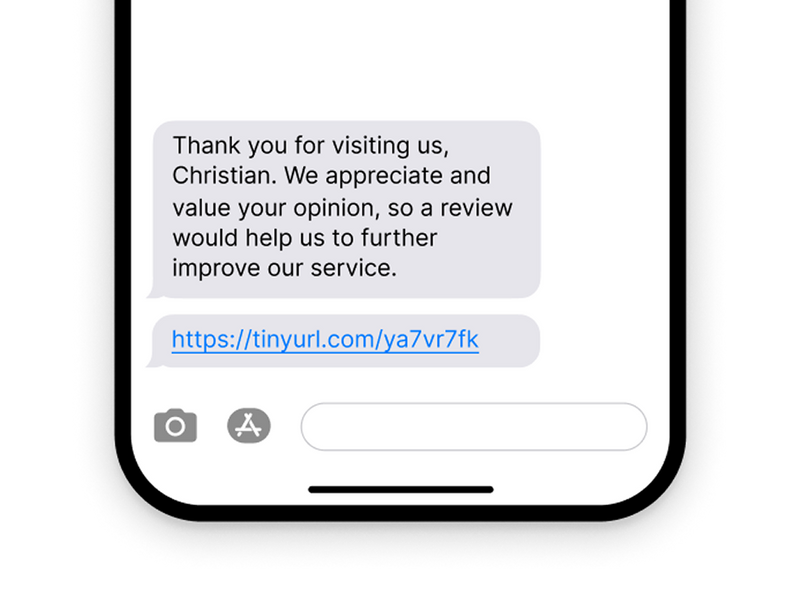
How to use it:
Track recurring feedback themes, like unclear instructions, long waits, or unfriendly staff, and feed these insights into process changes. Even small tweaks, like better signage or appointment reminders, can measurably improve CSAT.
You might also like - How to Ask Questions to Get Customer Feedback
2. Reduce Wait Times With Better Queue Management
Nothing frustrates citizens more than waiting in line without knowing how long it’ll take. Long, unstructured waits are one of the biggest contributors to low CSAT scores in government offices.
Why it matters:
Reducing actual and perceived wait times directly boosts satisfaction. When people feel their time is respected, their overall impression of service quality improves, regardless of how long the transaction itself takes.
How to fix it:
Use digital queue management software that allows citizens to check in remotely or on-site.
Display estimated wait times on lobby screens or via mobile notifications.
Send real-time two-way messages to reduce idle waiting and give citizens freedom to step away until it’s their turn.
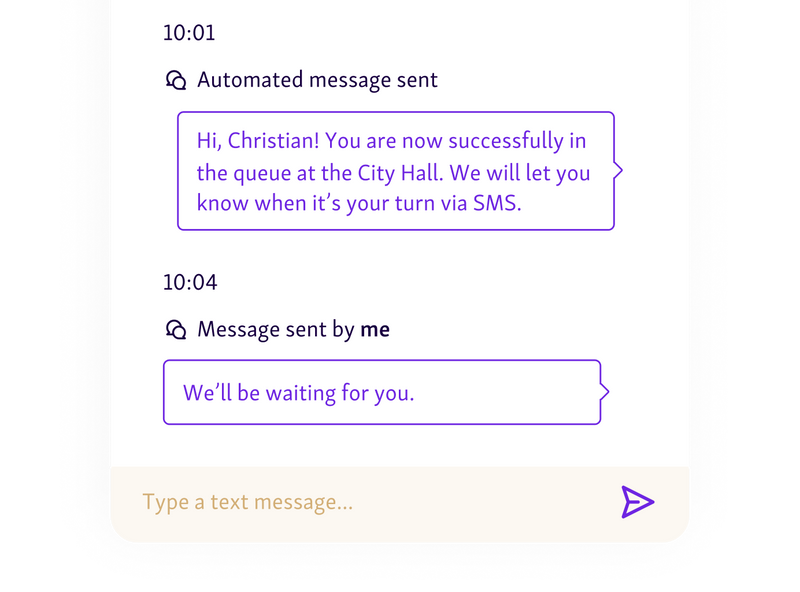
Pro Tips: When implementing queue software, prioritize systems that offer historical wait time analytics. These insights help you predict peak hours and proactively manage staff allocation.
3. Offer Omnichannel Access to Services
Today’s citizens expect the same level of convenience from public services as they do from private companies. That means having the ability to access services across multiple channels—whether it's online, on a mobile app, or in person at a physical office.
Why it matters:
Not everyone wants or is able to stand in line at city hall. By offering flexible access points, you reduce friction and increase satisfaction for a broader range of residents.
How to implement:
Online portals for scheduling appointments, submitting forms, or requesting services.
Mobile apps for real-time status updates, notifications, and virtual check-ins.
In-person kiosks that support self-service check-ins and form submissions.
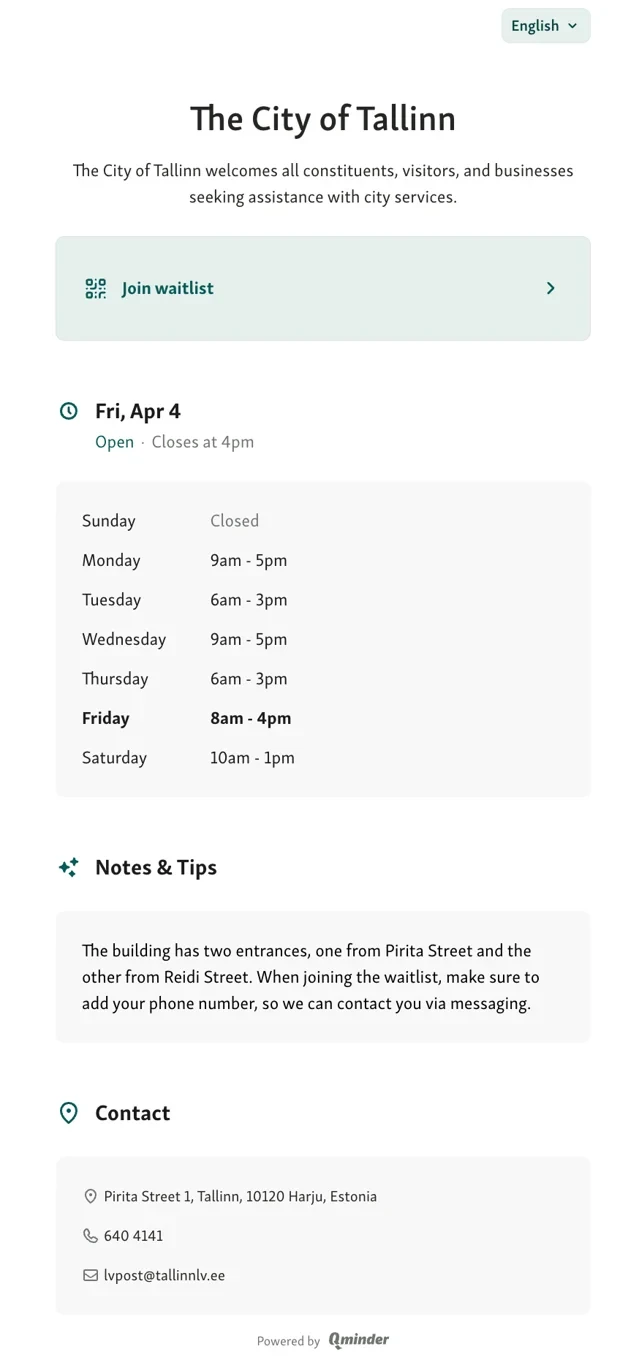
A consistent experience across all these touchpoints builds trust and helps citizens feel seen and supported—no matter how they interact with your agency.
4. Train Frontline Staff in Government Customer Service
Frontline staff are the face of public sector agencies. Their ability to handle interactions with professionalism, empathy, and clarity has a direct impact on citizen satisfaction. In fact, even a short wait can feel longer if the service interaction at the end of it is cold or confusing.
Key training areas to focus on:
Empathy and patience: Especially when dealing with frustrated or confused visitors.
Clear communication: Explaining processes, delays, or next steps in simple, respectful language.
De-escalation techniques: For handling tense situations without escalating frustration.
To continuously improve service quality, track CSAT scores by staff member or department. This not only helps identify areas for additional training but also rewards top performers and builds a culture of accountability.
5. Communicate Transparently and Proactively
One of the biggest frustrations in public services is uncertainty, citizens often don’t know how long they’ll wait, what documents they need, or why there’s a delay. Transparent communication can significantly ease this tension and improve overall satisfaction.
Ways to keep citizens informed:
Digital signage in waiting areas to display queue progress, expected wait times, or important updates.
Mobile notifications or SMS alerts to keep visitors updated if there’s a delay or change in their appointment.
On-site staff announcements or check-in kiosks that proactively explain what to expect during the visit.
When people feel informed and respected, they're more patient—and far more likely to walk away with a positive experience.
Also read - Customer Satisfaction – Make Your Customer Addicted to Your Business
3 Essential Metrics for Improving CSAT
To improve citizen satisfaction, you need to measure it consistently and act on what the data reveals. Tracking the right CSAT metrics helps local governments pinpoint issues, monitor progress, and make informed service improvements.
1. CSAT (Customer Satisfaction Score)
CSAT tells you how happy someone is with a single visit. A short survey right after the interaction helps teams understand what’s working and what isn’t.
Best used after in-person visits or service desk interactions
Helps flag negative experiences early
Easy to do trend analysis over time with the right tools
2. NPS (Net Promoter Score)
NPS shows how likely someone is to recommend your service to others. It’s a strong indicator of overall trust and long-term satisfaction.
Good for measuring perception, not just transactions
Helps identify areas that need deeper improvement
Open-ended feedback often reveals more than the score itself
3. First Contact Resolution (FCR)
FCR looks at whether issues are fully resolved on the first try. It reflects how prepared staff are and how clear processes are:
Lower FCR often means unclear instructions or staff limitations
Useful for spotting recurring service roadblocks
Can be tracked across in-person, phone, or digital touchpoints
Tools That Support Public Sector Customer Service Improvement
To truly improve government customer service and citizen satisfaction, agencies need the right digital tools. These platforms streamline operations, reduce human error, and ensure services are delivered consistently and transparently. Here are some essential tools that support CSAT efforts in public services.
1. Queue Management Platforms
Queue management platforms help public sector offices handle high visitor volumes without overwhelming staff or citizens. By digitizing the check-in and queuing process, these tools bring structure and clarity to what often feels like chaos in busy government buildings.
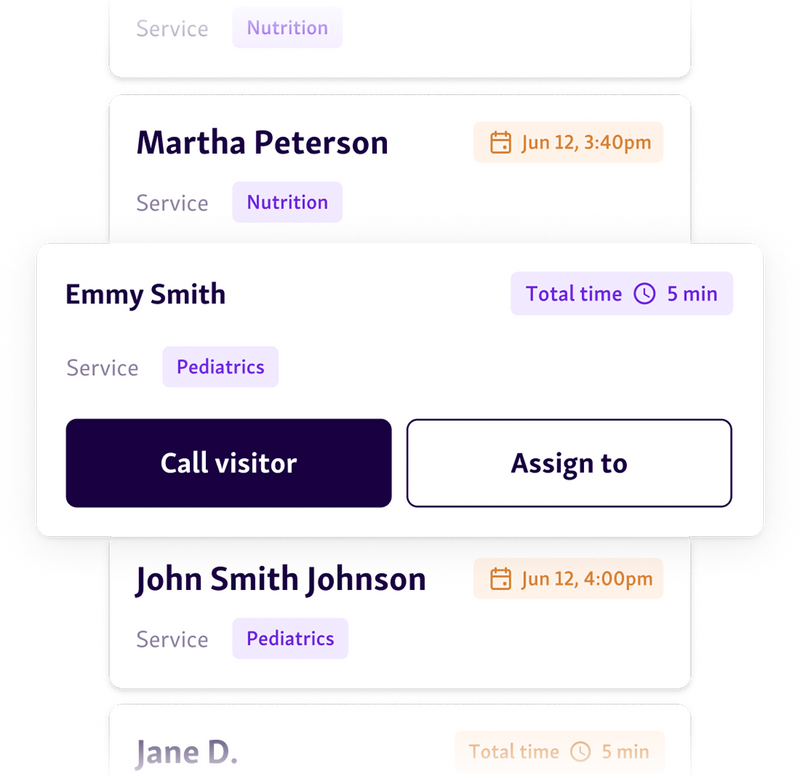
Key Benefits:
Manage Foot Traffic Smartly: Track the number of visitors, peak hours, and service load to avoid overcrowding and long lines.
Reduce Congestion and Wait Anxiety: Offer estimated wait times and virtual queue options to keep people informed and out of crowded lobbies.
Data-Driven Decisions: Collect insights on wait times, service durations, and walkouts, which can be used to fine-tune staffing and workflows.
Boost Staff Productivity: With real-time queue visibility in the service dashboard, staff can prioritize efficiently and serve more citizens without burnout.
Improve Citizen Experience: Citizens appreciate knowing what to expect, how long they’ll wait, and where they are in line, it builds trust and reduces frustration.
Platforms like Qminder provide a citizen-first queuing experience while also equipping public agencies with the data they need to optimize performance. Whether it’s a DMV, city hall, or social service office, modern queue tools are central to any serious effort to improve government customer service.
2. Feedback Collection Tools
Collecting feedback in real time is one of the most effective ways to understand what’s working, and what isn’t, in public sector customer service. Feedback tools help capture citizen sentiment immediately after a service interaction, allowing agencies to respond quickly to concerns and identify areas for improvement.
Key Benefits:
Real-Time Data Collection: Use touchscreen kiosks, tablets, or mobile surveys at exit points to prompt citizens with short, targeted questions about their experience.
Identify Recurring Issues: Dashboards consolidate responses, highlight common complaints, and surface patterns that may otherwise go unnoticed.
Measure Staff Performance: Feedback can be linked to specific services or departments, helping to flag coaching opportunities or recognize top-performing employees.
Track Improvement Over Time: Compare feedback across weeks or months to assess whether operational changes are making a real impact.
Tools like HappyOrNot and SurveyMonkey offer easy-to-deploy solutions that work across physical and digital environments, giving local governments a scalable way to measure and improve satisfaction.
3. Analytics Dashboards for Service Trends
Analytics dashboards give local governments a clear, real-time view of how their services are performing. These dashboards pull data from various touchpoints — queue systems, feedback tools, appointment platforms, and present it in a format that's easy to understand and act on.
What You Can Track:
High-Traffic Periods: Spot peak hours or days to optimize staff schedules and reduce wait times.
Recurring Complaints: Visualize trends in citizen feedback to address underlying service issues.
Staff Performance: Compare service times and satisfaction scores across teams to identify both high performers and coaching needs.
Service Bottlenecks: Understand where and why delays are happening so you can fix them before they become chronic problems.
Tools like Power BI, Tableau, or the built-in analytics in Qminder make it easy to turn raw service data into actionable insights, helping agencies shift from reactive fixes to proactive service design.

Step-by-Step Process to Improve Customer Satisfaction
Improving government customer service doesn’t have to be overwhelming. A structured, focused approach helps agencies make meaningful progress without stretching resources too thin. Here’s a simple three-step framework to get started:
1. Audit Your Current Service Gaps
Before you can improve anything, you need a clear picture of where things stand. Start by reviewing:
Citizen complaints and feedback trends: What do people consistently mention — long waits, unclear instructions, staff behavior?
Service data: Look at metrics like average wait time, abandonment rates, and first contact resolution.
Internal staff insights: Frontline employees often know exactly where the friction points are.
Use this audit to pinpoint bottlenecks in both digital and in-person experiences. You’ll be surprised how often a simple signage change or small workflow tweak can reduce citizen frustration.
2. Choose One Area to Improve First
It’s tempting to overhaul the entire service operation, but trying to fix everything at once leads to burnout and scattered results. Instead:
Pick a high-impact area, such as reducing lobby congestion or improving appointment scheduling.
Use your audit results to identify quick wins, issues with a clear solution that can demonstrate progress.
Align your choice with department goals, budget, and available tools.
Starting small allows your team to build momentum and secure buy-in for larger transformations.
3. Test, Measure, and Iterate
With a target area identified, run a controlled test or pilot:
Introduce a new tool (like a digital check-in kiosk or SMS update system).
Set measurable goals, e.g., reduce wait times by 20% in two weeks.
Collect data before, during, and after the pilot to evaluate impact.
Once you see what works, scale it to other departments or services. And keep iterating — even small tweaks based on data and citizen feedback can yield major improvements over time.
Better Public Sector Customer Service Begins With Better Tools
Improving CSAT in local government isn’t just about efficiency, it’s about building public trust, reducing frustration, and delivering services that truly meet community needs.
By tracking the right metrics, listening to citizen feedback, and using modern tools, agencies can shift from reactive problem-solving to proactive service delivery.
Queue management platforms like Qminder make this transformation easier, offering real-time visibility, streamlined workflows, and a more respectful experience for every visitor. If you're ready to modernize your public sector customer service and boost satisfaction, Qminder is the ideal solution to get started.
Start improving your government customer service with a free trial of Qminder today.
Social media gives citizens a direct channel to voice praise or complaints in real time. Monitoring this feedback helps agencies identify recurring issues and sentiment trends quickly, allowing for faster improvements that directly impact CSAT scores.
Engaged, motivated employees tend to deliver more empathetic and efficient service. When frontline staff feel supported and valued, it reflects in their interactions with citizens—ultimately improving the overall customer satisfaction levels in public sector services.
Yes. Predictive analytics uses historical and real-time data to anticipate service bottlenecks or dissatisfaction triggers. This allows government agencies to make proactive changes—such as adjusting staffing or communication—that can positively influence future CSAT scores.

